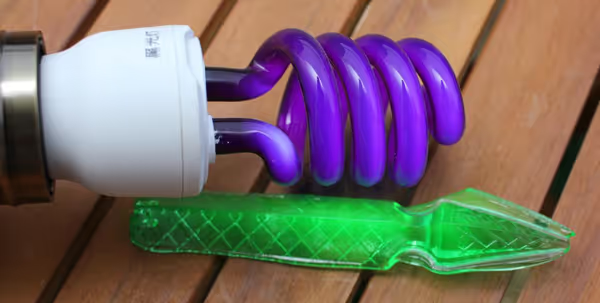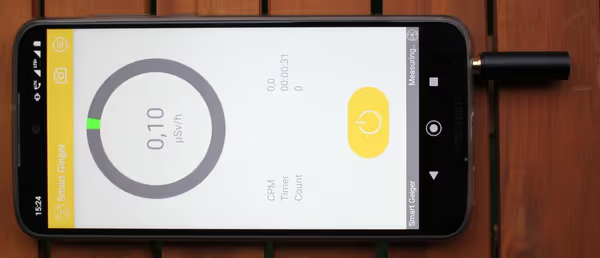Geiger counter for Arduino and smartphones versus uranium glass
Microcontrollers and even smartphones and their apps can use a wide array of sensors including those less obvious like Geiger counters. Simple Geiger counters can be used to showcase natural radioactivity of some objects like glass and ceramics doped with uranium compounds, old glowing in the dark clock dials and more.
Geiger counter
Classical Geigera-Müller tube is filled with a noble gas with a bit of alcohol vapor. Radiation entering this tube like say an alpha particle causes the gas to ionize to then create avalanche discharge in the tube which is then picked up by the electronics of the device as a voltage pulse (often converted to that characteristic cracking sound).
Geiger counter kit for Arduino
There is a RadiationD kit for Arduino and other microcontrollers. It can work standalone giving each pulse as audio but when connected to a microcontroller it can give a more precise data via SPI interface. As it's a low quantity Chinese board the documentation and libraries can be hard to come by, but on Github there are some ports of it SPI library for other boards, not only Arduino.
The SPI and power is available on the P3
pins (GND, 5V, VIN) but when use standalone all it needs is 5V power.

Smartphone radiation meter
One of smartphone gadgets is a radiation meter based on PIN diode. This device plugs into yours phone audio connector and with a dedicated app it can measure radiation to some extent - it's not designed for professional or precise measurements.

Testing Geiger and radiation meters
To test a Geiger counter or other radiation meter we need some source of radiation that will be bit higher than the surrounding level of radiation. Such levels of radiation are safe but they do give a reading on such devices.
Bananas with their radioactive potassium isotope usually will be to weak to give a reading on those devices. The best thing is ceramics with glaze that have been doped with uranium compounds as pigments (brown-yellow-green ugly thing). Such ceramics can have quite strong radiation levels compared to other options.
Next we have uranium glass (vaseline glass) which is doped with uranium compounds to give it green-ish color. It radiation is quite weak so some simple meters may not react to it.


Other options are old clocks with dials glowing in the dark thanks to radioactive radium paint. Early on, over 100 years ago such dials were painted by hand and women doing so often used their lips to sharpen the brush, thus ingesting small amounts of the paint. This then lead to radiation sickness and death of many workers (radium girls
) before radiation hazards were fully understood.
Uranium sources will emit beta and gamma radiation, while for alpha particles we could use some smoke detectors - those based on americium.
And some rocks, especially those rich in Uranium ore can also be radioactive enough to give a reading.



The FTLab smartphone radiation meter did react to the uranium glass however the readings weren't really consistent and even without a source the device could start giving random readings, especially when touched.
The RadiationD kit with a Geiger tube was much more consistent and properly reacted to the uranium glass, albeit only slightly.
Comment article